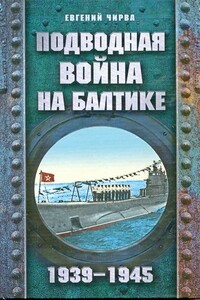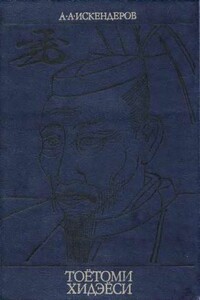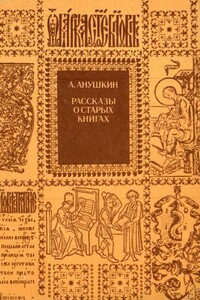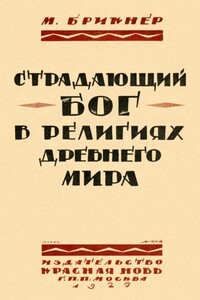Под сенью Святого Павла: деловой мир Лондона XIV — XVI вв. - [141]
The fact that these requirements were bolstered up in town documents shows that aldermen in London had a certain legal separation from other townsmen and their membership was limited only by high-ranking people with a property status.
All the power in the town — executive, judicial, administrative, and legislative — was in the hands of aldermen and officials, including the upper ones, chosen from them. Mayors who headed London's municipality were elected only from among aldermen. Sheriffs were also mainly aldermen. Recorders, chamberlains, town clerks and other civil servants were made up of aldermen as well.
The most important town positions were considered as royal too: the Mayor was not only the head of London's municipality but also a royal official. The same and even more can be said about sheriffs for whom their service to the king was a priority.
London's city power was concentrated in the municipality which has been embodied in the building of Guildhall since the 15>th century. In the whole the structure of power in London of the 14>th — 16>th centuries can be seen as follows: the “Council of Aldermen”, about 23–26 people (according to the number of administrative districts) and a mayor; the “Council of the Chosen” which included the mayor, aldermen and about 150–200 councilors who were elected in administrative districts; the “Council of Citizens Assembly” consisting of a mayor, aldermen, sheriffs, and, approximately, 70 “guild masters” registered in freemen lists and wearing a livery of one of the Great Twelve Livery Companies.
The city administration was closely connected with the judicial power represented by the Mayor's Court, Aldermen's Court and the Sheriff's Court which tried property, trade, and various financial cases. There were also District Courts with aldermen at the head that dealt with the protection of administrative districts and provided their social and fire safety and sanitary state.
During the given period formation of city authorities and senior officials was taking place in the way of co-optation. Moreover, several of the most important posts (from 3 to 9 successively and from 3 to 4 simultaneously) could be engrossed for quite a long time though in the 15>th — 16>th centuries prestige of administrative and police posts was gradually decreasing while financial and business positions were becoming more attractive. It should be also noted that aldermen occupied their posts for life.
Power exercised by the representatives of the London aldermen group during the 14>th — 16>th centuries could be characterized as elitist-oligarchic.
An important factor of the unity and consolidation of London ruling elite, its stability and securing of seclusion was marriages among the representatives of aldermen families. In fact, the principle of having life posts which grew into life-hereditary gave some aldermen families the opportunity of constant participation in London power holding structures. It seems that we may speak about 20–30 affinitive families.
Business connections between ruling families in the spheres of trade, finance and credit operations, investment into real estate and its commercial usage can be clearly traced in the alderman environment. Family solidarity seems to be the most important instrument of political and economic dominance of the elite.
However, seclusion of the aldermen community of the 14>th — 16>th centuries was not absolute. It was constantly replenished by people from different social layers and communities. Among them there were London merchants and merchants from various towns and boroughs of England who possessed large financial resources and good reputation in business and, as a rule, younger sons of the gentry from various counties of England to provide for life being involved into trading which was, at least in the 14>th century, a well-known activity.
A wide and regular inflow of new forces from counties and provincial English towns had a positive impact on qualitative characteristics of London alderman community. There was a considerable and more or less regular renewal of its members who strived for success and making a career and who, first of all, relied on themselves, their abilities and opportunities. All this strengthened economic might of big London merchants and interconnections between the classes, strengthening, therefore, the position of aldermen in the city community and authorities.
Marriage to those who belonged to different social groups and layers was one of the most important instruments of realization of a typical for London men of business tendency to the dialogue with a surrounding world. Matrimonial interests of business community covered representatives of the merchant class, both of the capital and provincial towns. It is obvious that such marriages promoted not only strengthening business cooperation among English merchants, but also were one of the few means of penetration of rich and enterprising merchants into the business world and London ruling class. Many businessmen families of London related to English aristocracy of different levels, both gentry and knights and even titled aristocracy. This shows a considerable interest of commercially active city dwellers in socially more prestigious community of the 14

Книга рассказывает об истории строительства Гродненской крепости и той важной роли, которую она сыграла в период Первой мировой войны. Данное издание представляет интерес как для специалистов в области военной истории и фортификационного строительства, так и для широкого круга читателей.

Боевая работа советских подводников в годы Второй мировой войны до сих пор остается одной из самых спорных и мифологизированных страниц отечественной истории. Если прежде, при советской власти, подводных асов Красного флота превозносили до небес, приписывая им невероятные подвиги и огромный урон, нанесенный противнику, то в последние два десятилетия парадные советские мифы сменились грязными антисоветскими, причем подводников ославили едва ли не больше всех: дескать, никаких подвигов они не совершали, практически всю войну простояли на базах, а на охоту вышли лишь в последние месяцы боевых действий, предпочитая топить корабли с беженцами… Данная книга не имеет ничего общего с идеологическими дрязгами и дешевой пропагандой.

Автор монографии — член-корреспондент АН СССР, заслуженный деятель науки РСФСР. В книге рассказывается о главных событиях и фактах японской истории второй половины XVI века, имевших значение переломных для этой страны. Автор прослеживает основные этапы жизни и деятельности правителя и выдающегося полководца средневековой Японии Тоётоми Хидэёси, анализирует сложный и противоречивый характер этой незаурядной личности, его взаимоотношения с окружающими, причины его побед и поражений. Книга повествует о феодальных войнах и народных движениях, рисует политические портреты крупнейших исторических личностей той эпохи, описывает нравы и обычаи японцев того времени.

В книге рассказывается история главного героя, который сталкивается с различными проблемами и препятствиями на протяжении всего своего путешествия. По пути он встречает множество второстепенных персонажей, которые играют важные роли в истории. Благодаря опыту главного героя книга исследует такие темы, как любовь, потеря, надежда и стойкость. По мере того, как главный герой преодолевает свои трудности, он усваивает ценные уроки жизни и растет как личность.

Имя автора «Рассказы о старых книгах» давно знакомо книговедам и книголюбам страны. У многих библиофилов хранятся в альбомах и папках многочисленные вырезки статей из журналов и газет, в которых А. И. Анушкин рассказывал о редких изданиях, о неожиданных находках в течение своего многолетнего путешествия по просторам страны Библиофилии. А у немногих счастливцев стоит на книжной полке рядом с работами Шилова, Мартынова, Беркова, Смирнова-Сокольского, Уткова, Осетрова, Ласунского и небольшая книжечка Анушкина, выпущенная впервые шесть лет тому назад симферопольским издательством «Таврия».

В интересной книге М. Брикнера собраны краткие сведения об умирающем и воскресающем спасителе в восточных религиях (Вавилон, Финикия, М. Азия, Греция, Египет, Персия). Брикнер выясняет отношение восточных религий к христианству, проводит аналогии между древними религиями и христианством. Из данных взятых им из истории религий, Брикнер делает соответствующие выводы, что понятие умирающего и воскресающего мессии существовало в восточных религиях задолго до возникновения христианства.